
By Brian Rothschild / TechCreative / GraphicFXOnline Studio.
Contributing blogger for PrintMediaCentr.com
Good day PMC readers,
X-Rite Incorporated, a global leader in color science and technology and its subsidiary Pantone LLC, announced that the ISO TC130 committee that sets global standards for the Graphic Arts has adopted the X-Rite Color Exchange Format version 3 (CxF3) as the new standard for color data exchange and verification. This standard (ISO 17972-1:2015) provides the graphic arts industry with an accurate, efficient way to communicate color information across any supply chain. X-Rite made its technology available to ISO without any restrictions to support and continue to contribute to the industry through this major technical development. X-Rite fully endorses ISO’s goal of harmonizing technical specifications for products and services that make industries more efficient by communicating color electronically in a global color supply chain.
X-Rite established the first version of CxF in 2000. Since then, the company has continued to invest in and improve the specification, using knowledge gained from serving a wide range of markets. X-Rite also established a website where the CxF3 specification and examples are publicly available for download (www.colorexchangeformat.com). This website has facilitated the wide distribution of CxF3 and provided strong support for the creation of the 17972 series and the publication of the earlier ISO standards.
For the sake of younger readers I’m going to give you some history, info & definitions:
Apache CxF: An open-source, fully featured Web services framework. It originated as the combination of two open-source projects: Celtix developed by IONA Technologies (acquired by Progress Software in 2008) and XFire developed by a team hosted at Codehaus. These two projects were combined by people working together at the Apache Software Foundation and the new name CxF was derived by combining “Celtix” and “XFire”. The CxF(3) format is defined as: A completely open way so that all aspects of a color can be communicated, even when the application and the color communication features required are unknown. This means that every software vendor implementing and supporting CxF/3 is able to easily and accurately extend the information throughout global workflows.
X-Rite: X-Rite, Inc. is a manufacturer of color measurement and management solutions, located in Grand Rapids, Michigan, United States. They own the Pantone Matching System.
ISO: (International Organization for Standardization) is an independent, non-governmental membership organization and the world’s largest developer of voluntary International Standards.
ICC: In color management, an ICC profile is a set of data that characterizes a color input or output device, or a color space, according to standards promulgated by the International Color Consortium (ICC). Profiles describe the color attributes of a particular device or viewing requirement by defining a mapping between the device source or target color space and a profile connection space (PCS). This PCS is either CIELAB (L*a*b*) or CIEXYZ. Mappings may be specified using tables, to which interpolation is applied, or through a series of parameters for transformations.
Every device that captures or displays color can be profiled. Some manufacturers provide ICC profiles for their products, and there are several products that allow an end-user to generate his or her own color profiles, typically through the use of a tristimulus colorimeter or preferably a spectrophotometer. The ICC defines the format precisely but does not define algorithms or processing details. This means there is room for variation between different applications and systems that work with ICC profiles. Since late 2010, the current version of the specification is 4.3
ALL the imaging equipment you use from monitors to proofing, to presses can and should be calibrated. Now, there is calibrating…(so the office staff all agree it looks good)…and then…theres a whole other kind of calibrating that MUST conform to specific standards called “International Standards of Operation” or “ISO” and those standards or “Profiles” for every devices via that OEMs website. This is called a “Proprietary Color Management Workflow” so, when some color page layout app…InDesign, Photoshop or Corel is describing the color space to another device (print) the color is converted to CIE-LAB for mathematical accuracy, tested and confirmed via a spectrophotometer which measures the amount of RGB it takes for your monitor to create “black or K” for profiling. So, it’s the “maximum density of black that can be created with your RGB monitor, or sometimes called “D-Max” value. And once printed, that ink on paper has to be scanned to see how dense and what pattern the dot’s are using X-Rite equipment for both spectra and densitometer scanning and the color info STILL must be able to be exchanged accurately to all devices in the workflow.
Ok, now notice I haven’t really spoke about .CxF files yet. Whereas in the title you can see 3 different topics that are so connected it’s not funny. Why? .CxF is “Open Source” not proprietary. which means your not obligated to have a service contract or limit yourself to any 1 (one) specific OEMs workflow or work around, example Adobe!
“We (CGS Publishing) see it as finally being able to objectively communicate a color’s full spectral information to all stakeholders in the create, design, produce & report supply chain. The other plus is the “open source” nature of the .cxf file format. The current model is proprietary (e.g Archroma and Pantone-PantoneLive) meaning the creator/brand and their supply chain partners are required to pay to communicate that color information. With CxF a chosen color is communicated fully (lab, hue, transparency….) and freely.” ~ Rob Lawrence (CGS Publishing Technologies International, LLC)
So…we see here that for Rob & CGS, by using the .CxF file format they are not limiting themselves, in fact, quite the opposite. They are exposing their clients to the plain simple truth that they keep their finger on the pulse of the industry in order to make things simple, easy and affordable for both themselves and their clients.
Now, press room managers, prepress operators, press and or art dept. managers…these are the people who need to know part of, if not all of this information because if you are ISO rated and you want to keep doing business with other ISO rated companies, your company better pass the examination of you wish to keep getting re-orders for 10M labels from Coke, or the custom die-cut for HP’s new POP display going up in all the new Staples retails stores next month. Were talking “Big Business.” Printing up 1,000 shells of a business card is no big order. Unless that order is for Disney World as that account will never die, only the sales rep. So, how do you pass this test? By proving (via math) that your company can hit that ICC/ISO conformed color target consistently.
.CxF/3 is nothing new. In fact, it’s been a major topic of discussion for almost 20 yrs. So…what’s all the “hubbub” about? It’s extremely technical and for the readers sake I want to keep it simple. I’m sure you’ve heard of .pdf and most recommend .pdf/x1a to submit for normal, standard output, but, if you look at the choices in the pop-up menu it goes all the way up to .pdf/1.8 and is about to become 2.0 if voted yes by the ICC meeting in Switzerland later this year and it will be able to handle embedded XML as a standard, not an option that may or may not work well. In my ICC LinkedIn group I simply mentioned this topic and went from no contribution to TOP contributor in a week…and I’m not as smart as I look, so here are some snippets from the discussion thread I found of value.
• The world has needed a good interchange format for a long time but I am not as pleased as some that CxF3 appears to be a top contender. In my last look at CxF3 several years ago I had many technical objections, most of which were based on the format being heavily weighted toward X-Rite instruments and software. CxF3 is a mashup of spectral data, colorimetric data, color charts and palettes which makes it a very verbose format.
I had hoped that the IES TM-27-14, an XML format for spectral data which was being extended to include multiple spectra per file would be completed before CxF3 was adopted because it is more vendor neutral, but alas, the slow pace of standards committees did not allow it to be completed in time. I hope the IES does not give up and completes extending TM-27-14. I would like to have more standardized options for color spectral data exchange than the “everything and the kitchen sink” approach of CxF3.
As the ICC moves toward including spectral data within a profile, if CxF/3 is adopted for the internal spectral data storage format, the profiles will grow quite large in size and I suspect there will be problems with color management implementations due to the different types of data stored within CxF/3.
• I would like to remind folks that in most countries there is NO CHARGE to join an ISO committee – so that if you have a position on a topic, your participation is welcome and your voice will be heard.
Because CxF/X (the XML serialization of CxF) was the only option presented to ISO TC130 for the storage and transmission of spectral color information, not only is it being used as a general format but it has also been adopted as part of ISO 32000-2 (aka PDF 2.0) for use in specifying such color information in PDFs going forward.
So again, if you believe that incorporating CxF/X info PDF would be problematic for the industry, NOW would be the time to speak up before it becomes final for PDF 2.0. The next meeting of ISO TC171 (where 32000 is handled) is in November in Basel, Switzerland.”
• CxF is a text file. It is completely human readable. While it is possible with CxF3 to add encryption, the characters, while now nonsense, are still human readable. X-Rite has invented many data exchange formats over the years. CxF is the most recent and has been mostly accepted. Still a few holdouts for MIF. CxF1 was roundly criticized for not being pure XML. CxF2 corrected most if not all of those issues and CxF3 added the ability to connect colors to images and to encrypt some data to protect it from industrial spies or some such. I never quite figured out what we needed to in a red color that I could get from a package off the shelf using a ColorMunki. All that aside, I have to say that having ISO TC 130 WG 2 and ISO TC 171 adopt this format has made the workflow a lot easier.
Now, I could keep going but at this point I think (if you’ve made it this far) that yes, it’s absurdly technical, and, many don’t have the time to keep up on theses topics so for the readers sake I’m going to come to close with this advise…
Big printing companies think “BIG” and small print companies think “small.” Even I admit I don’t understand all of the requirements to conform to all these standards however that does not negate that they exist. My advice…at least make the effort to try. Who knows, you just may learn something new…. which was the entire point of this article!
Brian Rothschild is a digital prepress and print specialist with over 20 years of experience. Certified by Apple and Adobe he has been studying and reporting on technological advancements from 1987 till present and can be reached at graphicfxonline.wix.com/home or email: [email protected] or twitter: @macfixer_1
All information aggregated via various OEM trade marketing promotional releases, print and online. The CxF File format is property of Apache. All OEM names or mentions are property of the respective owners.



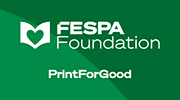
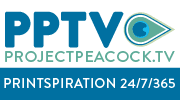


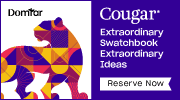

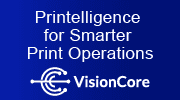

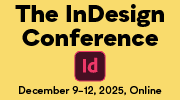

One Response
As already mentioned on PrintPlanet were this was also posted, this article has a lot of inaccuracies. CxF for print has nothing to do with Apache, don’t google and assume every acronym is related.
If you want to learn more about CxF, this helps. http://www.color.org/CxF_test.xalter
and this is the latest spec. http://www.iso.org/iso/catalogue_detail.htm?csnumber=61503
It’s becoming more widespread and at Drupa 2016 many vendors were showing solutions, it’s definitely one for the future